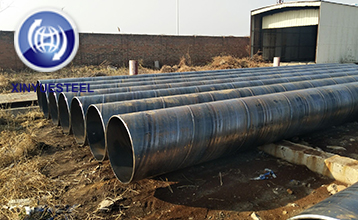Significant increase in thermal coal supply capacity
Nov. 18, 2021
The arrival of the peak season for thermal coal demand has improved the market’s pessimistic expectations to a certain extent. However, with the in-depth work of ensuring supply and price stabilization, domestic coal supply capacity has increased significantly, and short-term thermal coal prices will continue to be under pressure.
Domestic demand is expected to increase
Under the influence of strong cold air, the temperature in most areas of my country has dropped significantly. As the frost line advances to the south, as the temperature drops, the consumption of electricity and coal will gradually increase due to the rising demand for electricity by residents, entering the peak season of traditional demand. According to the analysis of thermal coal consumption in previous years, the peak season usually lasts 1-2 weeks before the Spring Festival. What is the specific increase in demand for thermal coal during the peak season? We use September data as an anchor point and calculate based on the two-year average data for 2019-2020. In November, the national thermal coal consumption increased by about 9 million tons of standard coal compared with September. In December, the national thermal coal consumption increased by 35.5 million tons of standard coal compared with September. From November to December, the total consumption of thermal coal increased by 44.5 million tons of standard coal.

On the other hand, the coal inventory of downstream power plants has increased significantly recently. Since November, the loading of electric coal into vehicles has increased by more than 35% year-on-year, and coal supply from power plants has continued to exceed coal consumption. As of November 6, coal reserves in power plants exceeded 117 million tons, an increase of about 40 million tons from the end of September. At present, the high-speed coal intake of power plants is still continuing, power plants’ inventories continue to increase, and purchasing pressure is reduced. In addition, as of November 6, the coverage of medium and long-term coal contracts for power generation and heating enterprises in various provinces (autonomous regions, municipalities) has exceeded 90%, of which 24 provinces (regions, municipalities) reached 100%.
In particular, it should be noted that in mid-October this year, the marketization of electricity prices was further promoted, the coal-fired on-grid electricity prices were increased and the upper and lower limits of the price of coal-fired electricity were increased, and high-energy-consuming projects were not subject to the 20% increase. It is understood that electricity prices for high-energy-consuming projects in some provinces have risen by 50% or even higher levels. Driven by the cost side, the high growth rate of thermal coal has been curbed. Since October, the year-on-year growth rate of daily consumption of coastal power plants has decreased significantly compared with September. In addition, the Central Committee of the Communist Party of China and the State Council recently issued the "Opinions on the Complete, Accurate and Comprehensive Implementation of the New Development Concept to Do a Good Job in Carbon Peak and Carbon Neutrality" to strictly control the blind development of high-energy-consuming projects. It is expected that the growth rate of thermal coal consumption may gradually weaken.
Inventory improvement in intermediate links
Since October, coal production has continued to grow. From November 1 to 5, the average daily dispatched coal output reached 11.66 million tons, an increase of more than 1.2 million tons from the end of September, and the highest daily output reached 11.93 million tons, a record high in recent years. According to the current output, the output in November and December is conservatively expected to be 350-365 million tons, a total increase of more than 50 million tons from September. The increase in domestic coal supply will basically cover the increase in demand.
While the country is actively producing, the railway is also actively shipping, especially after the completion of the centralized inspection and repair of the Daqin line in late October, the railway traffic volume is basically full, which further promotes the transfer of coal from the production area to the intermediate link. As of November 5, the coal inventory of Jiugang Port in the Bohai Sea Rim was 19.09 million tons, an increase of nearly 1.5 million tons from the end of September, achieving a positive year-on-year growth, and the supply and demand situation has further improved.
Spot market prices fell significantly. As of November 8, Qinhuangdao Shanxi’s 5,500 kcal thermal coal was quoted at RMB 1,080 per ton, a drop of more than 57% from the highest point in mid-November. As the market price moves closer to the long-term association price, the decline has slowed.
On the whole, the increase in domestic coal supply can basically cover the increase in demand. However, although international coal prices have fallen somewhat recently, they have not fallen as much as domestic prices. The quotations of imported coal have been upside down and the supplementary effect has weakened. On the other hand, the severe cold weather in winter will increase demand pressure, but will also affect coal production and outbound transportation in producing areas. The price of thermal coal may fluctuate weakly in the market outlook.



